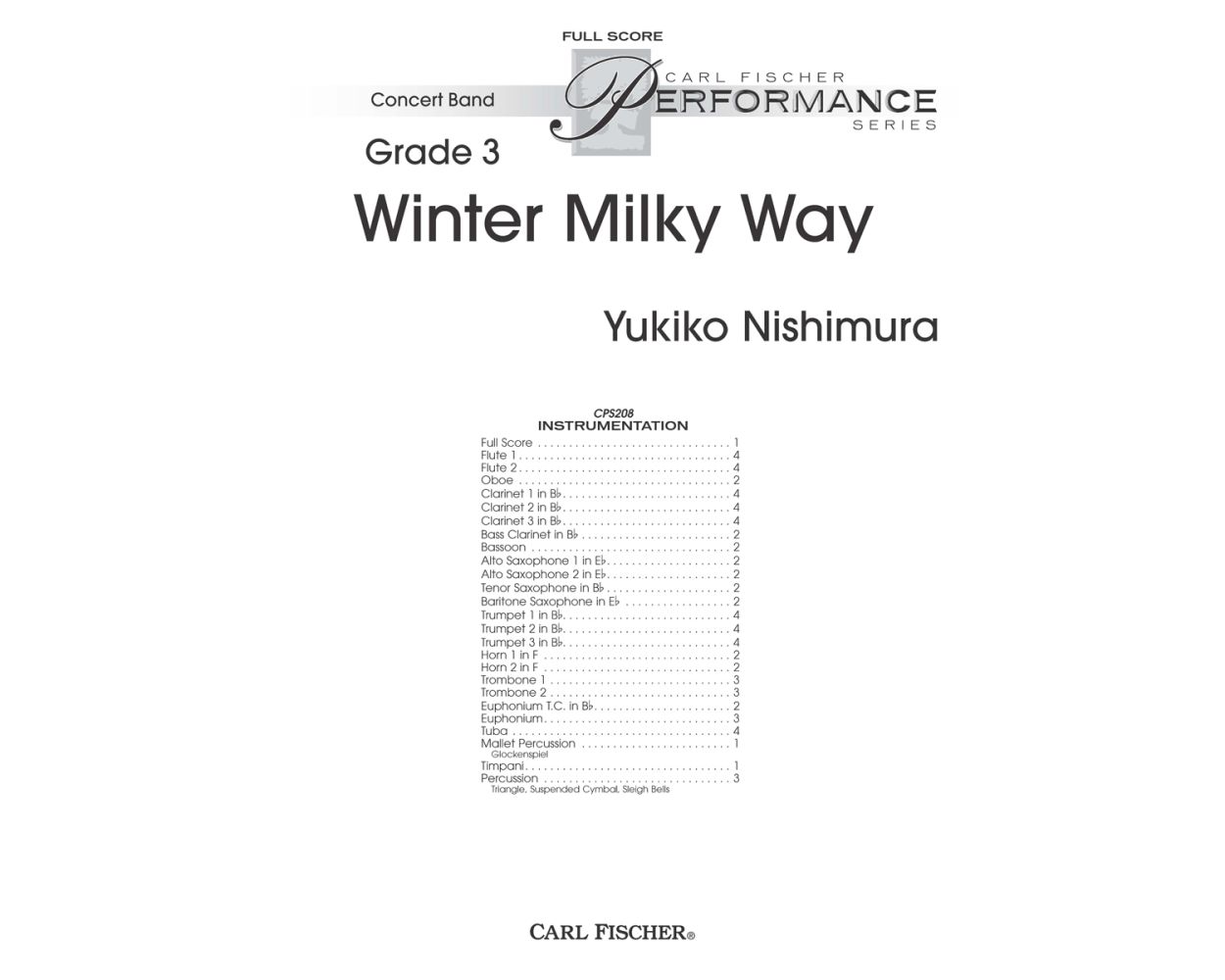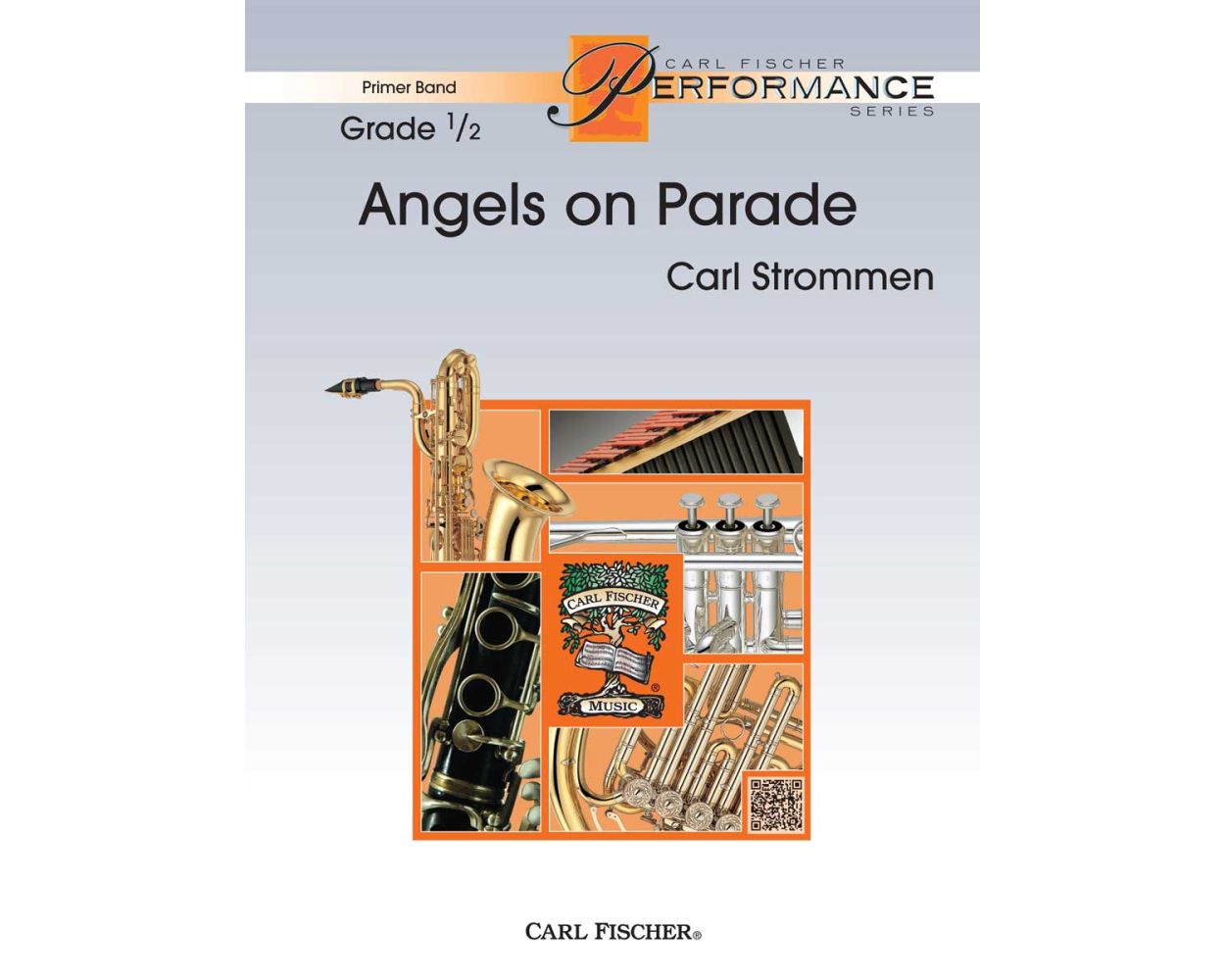Results
-
 £63.00
£63.00Swingin' Christmas
Add a unique twist to your next holiday concert! This arrangement features fun and unexpected swing jazz renditions of six classic Christmas carols. "Joy to the World," "Silent Night," "O Come All Ye Faithful," "Away in a Manger," "We Three Kings," and "O Little Town of Bethlehem" are all woven together in this up-tempo selection that your audience will definitely remember. A fresh take on classic carols to make your Christmas swing!
Estimated dispatch 12-14 working days
-
 £49.00
£49.00Dragon Rider
A musical depiction of taming and riding of a dragon during ancient times! This contemporary-sounding piece allows students to practice new performance techniques and musical storytelling. A great contrasting selection to traditional performance options, players can take on the challenges of tempo changes, accidentals, and expression in this exciting music adventure.
Estimated dispatch 12-14 working days
-
 £71.00
£71.00Winter Milky Way
Yukiko Nishimura's lush ballad Winter Milky Way will take students on an interstellar journey. With whimsical lines and jazz-influenced harmonies the piece is both idiomatic and impressive, just right for intermediate bands. Winter Milky Way is sure to delight performers and audiences alike.
Estimated dispatch 12-14 working days
-
 £38.00
£38.00Angels on Parade
For very beginning students, Carl Strommen gives us a new arrangement of a popular Christmas carol in march style, making it sound as if angels are marching down the street in a parade. This well-scored arrangement will play very easily for young students while sounding full and strong Take a serious look at this for your next holiday concert.
Estimated dispatch 12-14 working days
-
 £134.99
£134.99Medelpadia - Jan van der Roost
In this varied suite, named after the Swedish region Medelpad, folk dances in a Swedish fashion take stage in diverse tempi, styles and atmospheres. For Medelpadia, Van der Roost used a combination of an existing theme and newly composed music with a folk-like feel. Fascinating folk music in a well-composed framework!
Estimated dispatch 7-14 working days
-
 £67.50
£67.50Gangsta - Thomas Doss
In this work, much like in the real world, we often come across violent guys and dangerous dudes. If we are not careful, we could be putting ourselves at risk. Since a gangster could be lurking around every corner, we had better take care!
Estimated dispatch 7-14 working days
-
£60.99
Globetrotter - Wim Laseroms
Take a trip around the world with your young band with this great rock-inspired work.
Estimated dispatch 7-14 working days
-
 £60.50
£60.50Flight of Jolly Old Saint Nicholas - James R. Murray
Take a midnight sleighride with Flight of Jolly Old St. Nicholas as you rock your way to the end of this piece! John M. Pasternak does it again with this wonderful new holiday chart that your ensemble and audiences will love.
Estimated dispatch 7-14 working days
-
 £60.50
£60.50Mysterious Chase - Chris Ferguson
Take a mysterious ride with this spine-chilling new work for concert band from composer Chris Ferguson. With plenty of opportunities for rhythmic playing and dramatic accents, Mysterious Chase fits nicely in a Halloween concert or on any program throughout the year!
Estimated dispatch 7-14 working days
-
£71.50
Coffin Races - Jason K. Nitsch
Take a frightful ride with Jason K. Nitsch's Coffin Races! Perfect for halloween concerts, this new work makes use of sound effects and color from within the concert band. Similar in style to a Danse Macabre students and audiences alike will have a wonderfully spooky time!
Estimated dispatch 7-14 working days
